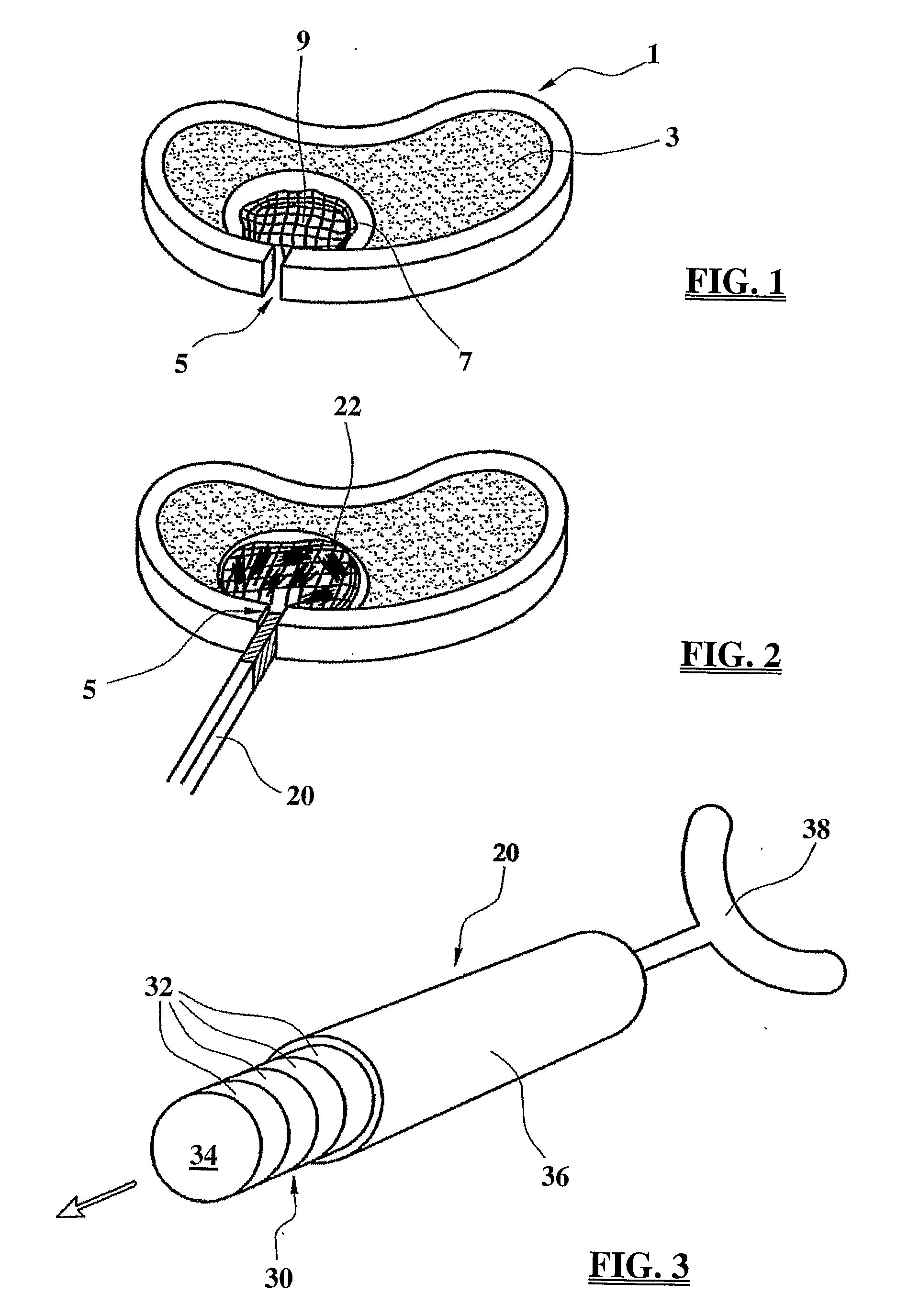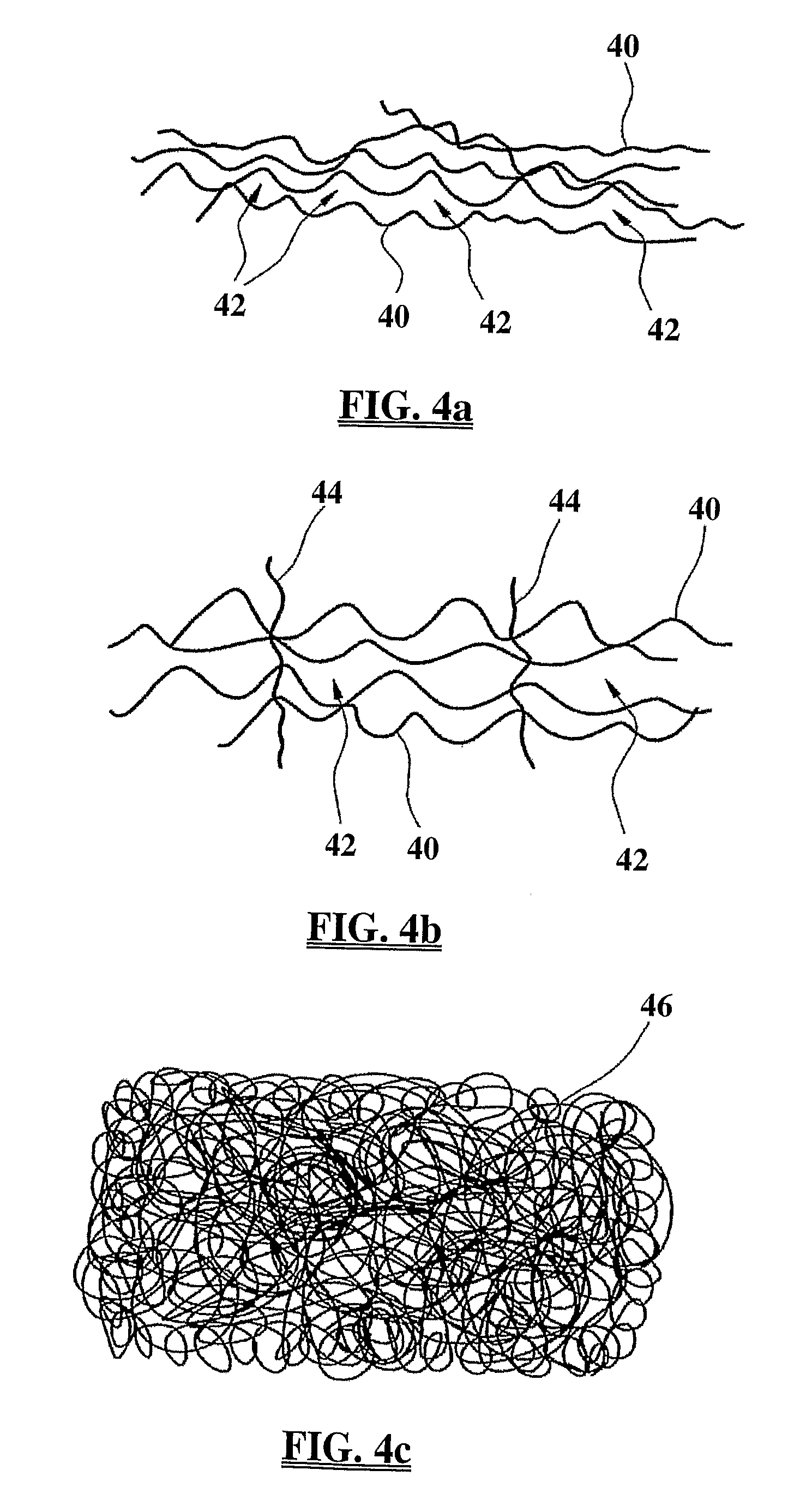[0025]One or more materials used in one or more of the filling elements may be bio-absorbable. The bio-absorbable material may be used to decrease the amount of one or more filling elements present and / or positions at which one or more filling elements is present and / or density at which one or more filling elements is present overtime. The bio-absorbable material may restrain one or more of the filling elements, or a part thereof, in a first state, the bio-absorption of the material allowing one or more filling elements, or a part thereof, to assume a second state. The second state may provide a greater internal volume for one or more filling elements and / or greater porosity for one or more filling elements and / or reduction in mass of one or more filling elements and / or provide more space for tissue ingrowth.
[0036]One or more materials used in the inner component may be bio-absorbable and / or soluble and / or degradable, particularly with the spine. The bio-absorbable material may be used to decrease the amount of inner component present and / or positions at which the inner component is present and / or density at which the inner component is present overtime. Areas of bio-absorbable material may be provided. Bio-absorbable fibres may be used to form the inner component. The inner component may be entirely bio-absorbable or only partially. Different materials having different rates of bio-absorption may be used. The may be mixed together in the inner component and / or may be used for particular areas thereof and / or in a particular sequence within the inner component. Slow, moderate and fast bio-absorption materials may be used. Preferably bio-absorption of the inner component is used to provide space for tissue ingrowth.
[0054]One or more materials used in the outer component may be bio-absorbable and / or soluble and / or degradable, particularly with the spine. The bio-absorbable material may be used to decrease the amount of outer component present and / or positions at which the outer component is present and / or density at which the outer component is present overtime. Areas of bio-absorbable material may be provided. Bio-absorbable fibres may be used to form the outer component. The outer component may be entirely bio-absorbable or only partially. Different materials having different rates of bio-absorption may be used. The may be mixed together in the outer component and / or may be used for particular areas thereof and / or in a particular sequence within the outer component. Slow, moderate and fast bio-absorption materials may be used. Preferably bio-absorption of the outer component is used to provide space for tissue ingrowth.
[0103]Whilst the inner and / or outer component can be entirely flexible, consistent with its fabric / textile nature, there are benefits in providing a more defined structure or profile to one or both of these components. Thus, as shown by way of example the outer component is provided of fabric, but within the bag a number of stiffening elements are provided. Thus a series of stiffening elements are provided in the form of rings which extend around the periphery of the outer component and so seek to maintain the side wall profile of the outer component. For insertion, the sides of the rings can be squeezed together and so reduce the cross-section of the outer component. Once inside the disc space, the compression can be removed and the rings will push the sides of the outer component outwards to the disc like profile. This assists in ensuring the shape of the implant is correct and assists in providing the space into which the filling elements can be introduced.
[0104]The stiffening elements may also be configured to push the top and bottom rings apart in a vertical sense. Again a downward compression can be used to reduce the profile of the outer component, with the removal of that compression allowing the outer component to return to the desired form.
[0105]Such arrangements of stiffening elements can be used to close or assist in supporting the closure of the inner and / or outer component. Equally, such stiffening elements can be used to support surfaces of the inner and / or outer component against loads. For instance, the surface of the implant which faces the vertebra above the implant in a standing individual and / or the surface which faces the vertebra below may be provided with stiffening elements which extend across them to resist loads. Stiffening elements down the sides, round the edges and at other positions may also be provided to support the shape of the implant and / or contribute to its functional characteristics. Resistance to load, extension, compression, flexion or the like may be provided in this way, as might resistance to tissue ingrowth pressures.
 Login to View More
Login to View More 


